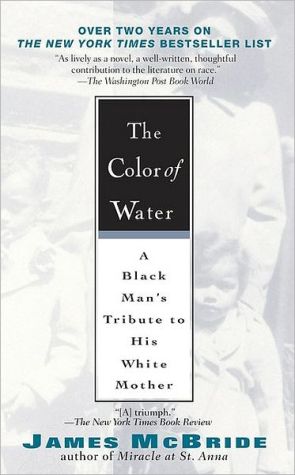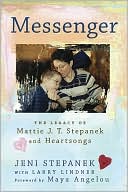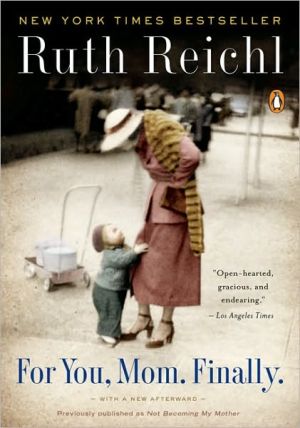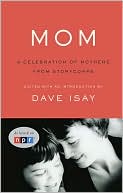Consuelo and Alva Vanderbilt: The Story of a Daughter and a Mother in the Gilded Age
When Consuelo Vanderbilt's grandfather died, he was the richest man in America. Her father soon started to spend the family fortune, enthusiastically supported by Consuelo's mother, Alva, who was determined to take the family to the top of New York society—forcing a heartbroken Consuelo into a marriage she did not want with the underfunded Duke of Marlborough. But the story of Consuelo and Alva is more than a tale of enterprising social ambition, Gilded Age glamour, and the emptiness of...
Search in google:
On a November day in 1895, crowds of curious sightseers gathered outside St. Thomas Church on Fifth Avenue in New York, intent on spotting a small dapper bridegroom whom they knew to be a great English aristocrat awaiting his bride-to-be. When she arrived, twenty minutes late, anyone who caught a glimpse beneath Consuelo Vanderbilt's veil would have seen that her face was swollen from crying.When Consuelo's grandfather died, he was the richest man in America. Her father soon started to spend the family fortune, enthusiastically supported by Consuelo's mother, Alva, who was determined to take the family to the top of New York society. She was adamant that her daughter should make a grand marriage, and the underfunded Duke of Marlborough was just the thing. It didn't matter that Consuelo loved someone else; as Alva once told her, "I don't ask you to think, I do the thinking, you do as you're told."However, the story of Consuelo and Alva is not simply one of the emptiness of wealth, of the glamour of the Gilded Age, and of enterprising social ambition. This is a fascinating account of how two women struggled to break free from the deeply materialistic world into which they were born, taking up the fight for female equality. Consuelo threw herself into good works; Winston Churchill encouraged her to make her first public speech, and her social and political campaigns proved an antidote to loneliness. Alva embraced the militant suffragette movement in America, helping to bring the fight for the vote to its triumphant conclusion and campaigning vehemently for women's rights until she died. In this brilliant and engrossing book, Amanda Mackenzie Stuart suggests that behind the most famous transatlantic marriage of all lies an extraordinary tale of the quest for female power. The Washington Post - Marge Piercy With Stuart's precise descriptions of the endless balls and fetes and the gowns and jewels worn by each woman, reading the book at times feels like consuming six courses of pastry. The latter half, when Alva and Consuelo begin to be politically active, is far livelier. Mother and daughter were both activists and snobs (Alva abused her servants, Consuelo was anti-Semitic), do-gooders and clothes-horses, denizens of Vogue and the political papers. Alva certainly deserves to be returned to her place in the history of feminism and the struggle for the vote in the United States, however controversial and uncomfortable her personality made her. But as Stuart ably demonstrates, they both heroically met the challenges faced by talented and energetic women at the turn of the last century
Consuelo and Alva Vanderbilt\ The Story of a Daughter and a Mother in the Gilded Age \ \ By Amanda Mackenzie Stuart \ HarperCollins Publishers, Inc.\ Copyright © 2006 Amanda Mackenzie Stuart\ All right reserved. \ ISBN: 0066214181 \ \ \ Chapter One\ The family of the bride\ \ As the delay lengthened and nervousness grew, selfappointed society experts in the crowd had time to debate one important question: had anyone seen the Vanderbilt family, whose apotheosis this was alleged to be? There could be no dispute that Vanderbilt gold was a powerful chemical element at work in St Thomas Church on 6 November 1895. It had given the bride her singular aura; it had drawn a duke from England; and without it, Alva would not now be waiting anxiously for her daughter to arrive. Scintillae of Vanderbilt gold dust brushed everything on the morning of Consuelo's wedding, from the fronds of asparagus fern to the glinting lorgnettes in the crowd outside. It was remarkable, therefore, that apart from the father-of-the bride, its chief purveyors should be so conspicuously absent; and even more striking that this scarcely mattered because of the force of character of the bride's Vanderbilt great-grandfather, whose ancestral shade still hovered over the players in the morning's drama as if he were alive.\ Cornelius Vanderbilt, founder of the House of Vanderbilt, lingered in the collective memory partly because he laid down the basis of the family's extraordinary wealth; and partly because of the robust manner in which he did it. He died in 1877, a few weeks before Consuelo was born, but he left a complex legacy and no examination of the lives of Alva and Consuelo is complete without first exploring it.\ Fable attached itself to Cornelius Vanderbilt, known as 'Commodore' Vanderbilt, Head of the House of Vanderbilt, even in his lifetime. He generally did little to discourage this, but one misconception that irritated him was that the Vanderbilts were a 'new' family and he embarked on genealogical research to prove his point. However, he held matters up for several years by placing an advertisement in a Dutch newspaper in 1868 which read: 'Where and who are the Dutch relations of the Vanderbilts?', causing such offence that none of the Dutch relations could bring themselves to reply.1\ More tactful experts later traced the Vanderbilts' roots back to one Jan Aertson from the Bild in Holland who arrived in America around 1650. A lowly member of the social hierarchy exported by the Dutch West India Company, Jan Aertson Van Der Bilt worked as an indentured servant to pay for his passage and then acquired a bowerie or small farm in Flatbush, Long Island. His descendants traded land from Algonquin Indians on Staten Island, starting a long association between the Vanderbilts and the Staten Island community of New Dorp. They also joined the Protestant Moravian sect, whose members fled from persecution in Europe in the earlyeighteenth century and settled nearby. The Vanderbilt family mausoleum is to be found at the peaceful and beautiful Moravian cemetery at New Dorp on Staten Island to this day.2\ In a development that goes against the grain of immigration success stories, the Vanderbilt family arrived in America early enough to suffer a downturn in its fortunes in the mid-eighteenth century. Just at the point when the Staten Island farm became prosperous, it was repeatedly sub-divided by inheritance and by the time the Commodore was born in 1794, his father was scratching a subsistence living on a small plot, and ferrying vegetables to market on a periauger, a flat-bottomed sailing boat evolved from the Dutch canal scow. Historians of the family portray this Vanderbilt of prehistory as feckless and inclined to impractical schemes, but he compensated for his deficiencies by marrying a strong-minded, hard-working, frugal wife of English descent, Phebe Hands. Her family had also been ruined, by a disastrous investment in Continental bonds. They had nine children. The Commodore was their eldest son.\ Circumstances thus conspired to provide the Commodore with what are now known to be many of the most common characteristics in the background of a great entrepreneur: a weak father and a 'frontier mother'; a marked dislike of formal education (he hated school and spelt 'according to common sense'); and a humble background.3 A humble background is almost mandatory in nineteenthcentury American myth-making about the virtuous self-made man, but it was a characteristic the Commodore genuinely shared with others such as John Jacob Astor, Alexander T. Stewart and Jay Gould. After his death the Commodore was accused of being phrenologically challenged with a 'bump of acquisitiveness' in a 'chronic state of inflammation all the time', but he was not alone in finding that childhood poverty and near illiteracy ignited a very fierce flame.4 More unusually for a great entrepreneur, the Commodore was neither small nor puny. He developed enormous physical strength, accompanied by strong-boned good looks, a notorious set of flying fists and a streak of rabid competitiveness. Charismatic vigour, combined with a lurking potential for violence, made him a force to be reckoned with from an early age and even as a youth he developed a reputation for epic profanity and colourful aggression that never left him.\ The Vanderbilt fortune was made in transportation. Its origins lay in the first regular Staten Island ferry service to Manhattan, started by the Commodore in a periauger, under sail, while he was still in his teens. From there his career reads like a successful case study in a textbook for business students. He ploughed back the profits from his first periauger ferry service until he owned a fleet. He expanded into other waters and bought coasting schooners. Then, when others had taken the risk out of steamship technology, he sold his sailing ships and embraced the age of steam, founding the Dispatch Line and acquiring the nickname 'Commodore' as he built it up.\ The Dispatch Line ran safer and faster steamships than any of its competitors to Albany up the Hudson, and along the New England coast as far as Boston up Long Island Sound disembarking at Norwalk, New Haven, Connecticut and Providence. Between 1829 and 1835, the Commodore moved easily into the role of capitalist entrepreneur, profiting from . . .\ Continues...\ \ \ \ Excerpted from Consuelo and Alva Vanderbilt by Amanda Mackenzie Stuart Copyright © 2006 by Amanda Mackenzie Stuart. Excerpted by permission.\ All rights reserved. No part of this excerpt may be reproduced or reprinted without permission in writing from the publisher.\ Excerpts are provided by Dial-A-Book Inc. solely for the personal use of visitors to this web site. \ \
List of Illustrations ixPreface xviiPrologue 1Part 1The family of the bride 11Birth of an heiress 46Sunlight by proxy 86The wedding 125Part 2Becoming a duchess 163Success 199Difficulties 237Part 3Philanthropy, politics and power 281Old tricks 316Love, philanthropy and suffrage 352Part 4A story re-told 395French lives 430Harvest on home ground 470Afterword 505Acknowledgements 511Notes 515Bibliography 545Index 559
\ Francine du Plessix Gray"Riveting . . . [An] excellent biography . . . Mackenzie Stuart narrates with an elegance equal to her subject’s."\ \ \ \ \ Antonia Fraser"Skilfully and sympathetically told. . . . Brilliant."\ \ \ Seattle Times"Fascinating... A thoughtful portrait of two strong, well-educated women who were more than the measure of their extreme wealth."\ \ \ \ \ Virginian Pilot"Book lovers, Anglophiles and social historians alike will find much to please them in this fine, well-researched biography."\ \ \ \ \ Washington Post Book World"Mackenzie Stuart has skillfully integrated a great deal of research... and she gives a rich sense of both women."\ \ \ \ \ Contemporary Review"highly readable, well constructed, novelish biography…a confident and compelling book."\ \ \ \ \ Vogue"[A] deftly contextualized account."\ \ \ \ \ Richmond Times-Dispatch"Compellingly readable… [Mackenzie Stuart] writes... with the eye of an accomplished historian and with profound sympathy for the central figures."\ \ \ \ \ USA Today"An intimate look at two women whose lives reveal changing social patterns. Just fascinating."\ \ \ \ \ Elle"[A] fascinating dual biography."\ \ \ \ \ The New Yorker"Impeccably researched . . . Mackenzie Stuart’s history marshals an impressive trove of primary documents."\ \ \ \ \ Newsday"Astute. . . . A lively narrative. . . . Written with impressive verve and confidence."\ \ \ \ \ Vogue“[A] deftly contextualized account.”\ \ \ \ \ Newsday“Astute. . . . A lively narrative. . . . Written with impressive verve and confidence.”\ \ \ \ \ USA Today“An intimate look at two women whose lives reveal changing social patterns. Just fascinating.”\ \ \ \ \ The New Yorker“Impeccably researched . . . Mackenzie Stuart’s history marshals an impressive trove of primary documents.”\ \ \ \ \ Elle“[A] fascinating dual biography.”\ \ \ \ \ Seattle Times“Fascinating... A thoughtful portrait of two strong, well-educated women who were more than the measure of their extreme wealth.”\ \ \ \ \ Washington Post Book World“Mackenzie Stuart has skillfully integrated a great deal of research... and she gives a rich sense of both women.”\ \ \ \ \ Virginian Pilot“Book lovers, Anglophiles and social historians alike will find much to please them in this fine, well-researched biography.”\ \ \ \ \ Contemporary Review“highly readable, well constructed, novelish biography…a confident and compelling book.”\ \ \ \ \ Richmond Times-Dispatch“Compellingly readable… [Mackenzie Stuart] writes... with the eye of an accomplished historian and with profound sympathy for the central figures.”\ \ \ \ \ Marge PiercyWith Stuart's precise descriptions of the endless balls and fetes and the gowns and jewels worn by each woman, reading the book at times feels like consuming six courses of pastry. The latter half, when Alva and Consuelo begin to be politically active, is far livelier. Mother and daughter were both activists and snobs (Alva abused her servants, Consuelo was anti-Semitic), do-gooders and clothes-horses, denizens of Vogue and the political papers. Alva certainly deserves to be returned to her place in the history of feminism and the struggle for the vote in the United States, however controversial and uncomfortable her personality made her. But as Stuart ably demonstrates, they both heroically met the challenges faced by talented and energetic women at the turn of the last century\ — The Washington Post\ \ \ \ \ Francine du Plessix GreySurmounting most obstacles through her innate intelligence and self-discipline, abandoning the harsh glitter of her life as a peer's wife for the pure gold of her happiness with a man she chose to love, Consuelo Vanderbilt Balsan left an ineffable legacy of style and grace that Stuart narrates with an elegance equal to her subject's.\ — The New York Times\ \ \ \ \ The New YorkerIn 1895, on the eve of Consuelo Vanderbilt’s marriage to the ninth Duke of Marlborough, the New York World published a concise reference chart: the bride, at eighteen years old, weighed a hundred and sixteen and a half pounds, had “delicately arched” eyebrows and a nose that was “rather slightly retroussé,” and was heir to a twenty-five-million-dollar estate. She had no interest in the groom, but a British aristocrat, albeit a poor one, held irresistible appeal for Alva, her socially ambitious mother. Stuart’s history marshals an impressive trove of primary documents, from newspaper accounts (the Times had a reporter assigned to cover bridesmaids) to letters and autobiographical writings. But her account, while impeccably researched, lacks psychological acumen. We learn that Consuelo—who gave the Duke the descendants he needed, divorced, and remarried—is credited with coining the phrase “an heir and a spare,” but it’s hard to tell what it might have meant to her.\ \ \ \ \ Publishers WeeklyIn 1875, the strong-willed Alva Smith married an heir to the Vanderbilt fortune in order to save her own family from further descent into genteel poverty. Twenty years later, she compelled her daughter Consuelo into a loveless marriage to the ninth Duke of Marlborough, in order to provide her with a career rather than an empty life. Mother's and daughter's remarkably similar trajectories through life-difficult first marriages, happy second ones, social leadership, arts patronage, a shift into activism-were shaped by the opportunities wealth offered and the calculated use of marriage as a business transaction in their class and era. In her first book, Stuart uses a remarkable breadth of sources to follow her subjects to Newport, R.I.; India; late Victorian and Edwardian England; the heart of the women's movement; and the south of France at the outbreak of WWII She tells a riveting story but keeps her distance from her subjects, not offering final judgment on Alva's coercion of her daughter or allowing emotion to intrude on the deaths of major characters. Still, Alva and Consuelo emerge as unique and fascinating characters, and the details of their lives and times make a very entertaining read. Agent, Clare Alexander. (Jan. 4) Copyright 2005 Reed Business Information.\ \ \ \ \ Kirkus ReviewsBritish author Stuart debuts with a saga of transatlantic maneuvers worthy of Henry James or Edith Wharton. Alva Smith bolstered the flagging fortunes of her Southern, formerly slave-owning family in 1875 by marrying William K. Vanderbilt, son of the fabulously wealthy but not socially acceptable Commodore. The Vanderbilts had made progress in getting into Mrs. Astor's good graces when William's philandering prompted a scandalous divorce in 1895. There was no way daughter Consuelo could be allowed to enjoy true love with a respectable New Englander; Alva steered her into the arms of the Duke of Marlborough. A contemporary newspaper reported that the Vanderbilts paid $10,000,000 in order to join their family to the Marlborough line, and the duke certainly needed the cash: The same paper reported that he earned the 1895 equivalent of $40,000, but his palace at Blenheim cost $370,000 to maintain. Consuelo was none too pleased with the arrangement, in which she had no say; small wonder that she kept her groom waiting at the altar while she wept in the arms of her father, who had no choice but to persuade her to get it over with. Consuelo did, and Alva was soon reaping the benefits due the mother of the Duchess of Marlborough. Good thing, for she needed points to reenter society after her divorce. Declaring that she would never again be financially dependent on a man (save for alimony, of course), Alva later became a strong advocate of women's rights-some said in penance for what she had done to Consuelo, separated from the duke in 1906 but not divorced until 1921, when she quickly remarried and found happiness among the nobility of France. Capable rendition of an elaborate family drama.\ \








